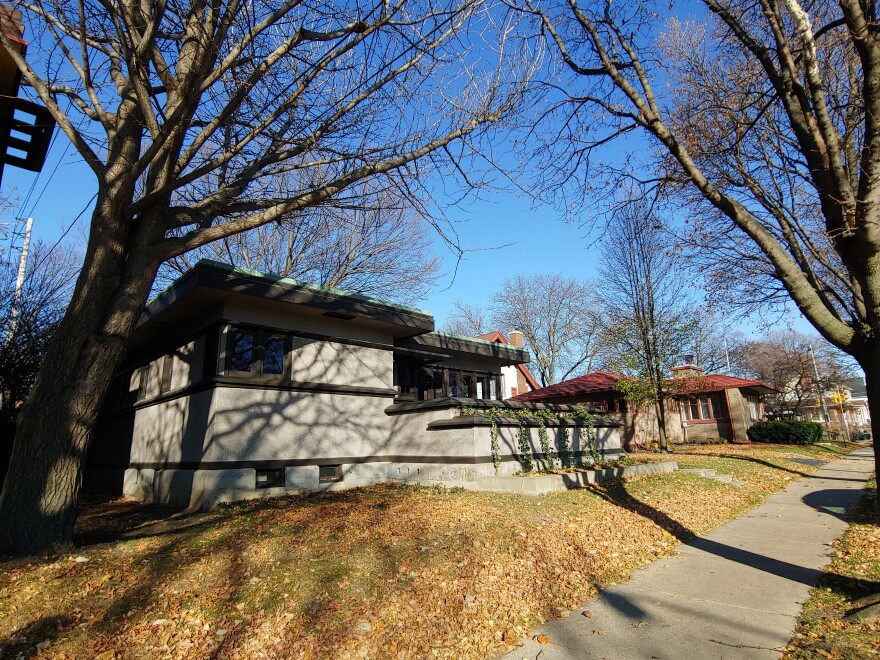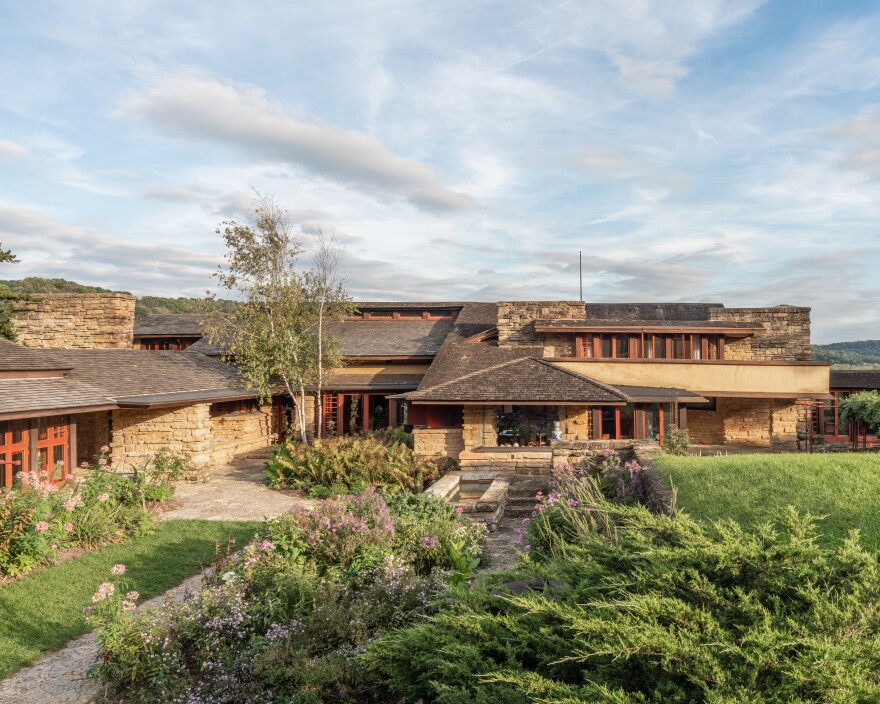COVID-19 has cut back or eliminated attendance at many arts and cultural venues. This includes properties designed by the architect Frank Lloyd Wright that are usually open to the public. But people who run those homes, museums and other sites say they're ready for reinvention, as Wright often reinvented himself.
Wright, born in Wisconsin 153 years ago, designed more than 1,000 buildings, and saw more than half of them realized. Nearly 20% of the world-famous, and occasionally controversial, architect's buildings have been destroyed. But some of those still standing are in Milwaukee and elsewhere in the Midwest.
In about 1910, Wright started designing homes for people of low and moderate income. They're known as American System-Built Homes, and six of them are at what's called Burnham Block on Burnham St. on Milwaukee's south side.
The block's museum home, usually open to visitors, still looks inside like things might have looked a century ago. For example, in the kitchen there’s a stove and icebox from the era.
WUWM's Chuck Quirmbach recently stopped by the museum. Burnham Block curator Mike Lilek opens the icebox and says, "The kids love this because we tell them before you had refrigerators, you had this icebox with multiple compartments. One of them was a door and your iceman, somebody in the neighborhood, would bring ice to you every couple of days."

Moving to the living room, Lilek says Wright's genius in designing a well-made home of 805 square feet still resonates.
"The people that come here, whether they're a Wright fan or just curious about Frank Lloyd Wright, usually visit the home and say, 'Boy, I could live here.' It [reflects] a lot of trends going on in the world today. People want smaller houses. They want them economically built. They want them ecologically sound," Lilek says.
About 5,000 people usually tour the museum home and a second Burnham house every year. But not this year.
Lilek says COVID-19 shut things down in March.

"For the last three years, the Burhnam Block as a museum has been in the black. So, the revenue from tours has paid the expenses — the cutting the grass, the real estate taxes. This year is a disaster,” Lilek says.
He emphasizes Burnham Block is not in danger of permanently closing. A friends group is still helping raise money, especially for renovation of one of the houses, that Lilek hopes to eventually rent for overnight stays. Spend a night with Wright, you might say.
Lilek also says the museum has a plan to reopen. One that takes into account the 60 or so volunteer tour guides, many of whom are older and at higher risk of dying from COVID-19.
"It'll be by reservation, the number of people will be smaller, we're going to do most of our presentation and discussion on the sidewalk, and people will be able to move through the house at their own pace. There'll be a steward in the house that'll help them to understand things. But for the most part, it'll be a sort of a semi-self-guided tour and we think that'll be safe,” Lilek explains.

But with the current COVID-19 surge, Lilek says that reopening likely won't be until next spring.
During the week of Nov. 9, Lilek took part in a national online conference called Saving Wright Now, organized by the Chicago-based Frank Lloyd Wright Building Conservancy.
In a keynote address, Justin Gunther, director of the large Fallingwater home Wright designed in Pennsylvania, said the architect had to innovate and reinvent, too.
"Wright responded to the challenges of the present, be they from outside forces like the Great Depression or from self-induced scandals, by embracing change,” Gunther said.

Also speaking at the conference, Carrie Rodamaker of Taliesin Preservation in Spring Green, Wis., west of Madison, said changing how tours operate might be a key to bringing in new fans of Frank Lloyd Wright.

"I would say this younger generation that is coming up, wants less of that standing and getting talked to, and more of that dialogue. That is an interesting avenue at public Wright sites. How do we do that? How do we take that narrative and move that forward?" Rodamaker said.
Lilek, of Burnham Block, talks of the Wright sites carrying forward the architect's legacy for another 150 years. It's a challenge that will include not only outlasting the current pandemic, but possibly many other unforeseen developments.
Do you have a question about innovation in Wisconsin that you'd like WUWM's Chuck Quirmbach to explore? Submit it below.
_



